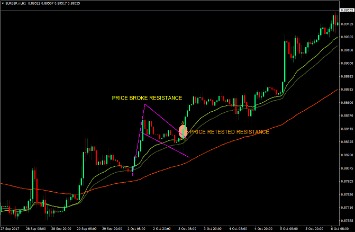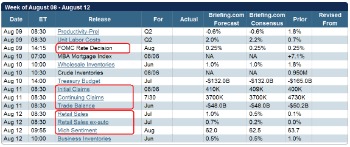Contents:

MACD is a widely used technical analysis tool that crypto traders rely on to spot trend changes and potential buying or selling signals in the crypto market. It was developed by Gerald Appel in the late 1970s and has since found application in financial markets such as crypto, forex, and stock markets. MACD indicator works pretty well as a technical indicator that gives signals for a trend reversal a couple of candles before the event. It shows the bullish or bearish divergences of the lines connecting the extremes of the price chart and indicator values.
From basic trading terms to trading jargon, you can find the explanation for a long list of trading terms here. You should consider whether you can afford to take the high risk of losing your money. When that occurs, the MACD line is getting closer to the MACD signal line. The derivative oscillator is similar to a MACD histogram, except the calculation is based on the difference between an SMA and a double-smoothed RSI.
When price breaks out of the wedge and there is clear divergence, whether it’s to the upside or the downside, it can be a signal that the trend is reversing. Others might look for price crossing a shorter-term moving average to help strengthen the signal of the divergence. The Moving Average Convergence Divergence is an oscillator-type indicator that is widely used by traders for technical analysis .
How to read the Indicator?
Remember, it’s easy to get caught up in technical indicators only to miss the bigger picture. These are tools — no matter what anyone says it’s not an exact science. Some traders combine the MACD with other indicators to confirm overbought or oversold conditions. The most common technical indicator for this purpose is the Relative Strength Index .
- https://g-markets.net/wp-content/uploads/2021/09/image-KGbpfjN6MCw5vdqR.jpeg
- https://g-markets.net/wp-content/uploads/2021/09/image-Le61UcsVFpXaSECm.jpeg
- https://g-markets.net/wp-content/uploads/2020/09/g-favicon.png
- https://g-markets.net/wp-content/uploads/2021/04/Joe-Rieth.jpg
- https://g-markets.net/wp-content/uploads/2021/09/image-wZzqkX7g2OcQRKJU.jpeg
MACD is a popular technical analysis tool that’s usually displayed in a subchart either as a histogram or in line form . Below this box, you’ll see the MACD graph, which is the difference between the 12-day and 26-day exponential moving averages of the security’s price. This is also where you can find the signal line, which serves as an indicator for timing trades.
How to use the MACD indicator?
Now when the trading weeks have only 5 days, possibilities of changing the period settings cannot be overruled. To calculate the MACD, we should get the values for the short- and long-term EMAs first. The idea of using exponential moving averages is because they put more weight on the most recent price changes . In the equation, the long-term EMA is observed over 26 periods, while the value of the short-term EMA is taken on the basis of 12 periods. Period refers to the time-frame you’re trading on, so for a daily chart it would be 12-day and 26-day EMAs respectively.
A simple line graph of this is often referred to as the ‘MACD Line’. Let us go through the math first and then figure out the applications of MACD. As the name suggests, MACD is all about the convergence and divergence of the two moving averages. Convergence occurs when the two moving averages move towards each other, and divergence occurs when the moving averages move away.
MACD Indicator – How to Read the Chart?
The MACD is a relatively simple indicator, easy to comprehend, appeals to intuitive logic, and therefore resonates well with most traders. It can be a powerful tool if used effectively, especially for assessing the strength and momentum of trends and consequently predicting their continuance and potential reversal. I trade the major Forex pairs, some Futures contracts, and I rely entirely on Technical Analysis to place my trades. I began trading the markets in the early 1990s, at the age of sixteen.
This way, the how to read the macd helps you see when a new bullish/bearish trend is about to form. To completely understand what the Moving Average Convergence Divergence is, we should also take a look at the reason why it is so popular among traders. Due to being unbounded and despite being a momentum oscillator, it isn’t used to identify overbought or oversold markets.
- https://g-markets.net/wp-content/uploads/2021/09/image-sSNfW7vYJ1DcITtE.jpeg
- https://g-markets.net/wp-content/uploads/2021/09/image-NCdZqBHOcM9pQD2s.jpeg
- https://g-markets.net/wp-content/uploads/2021/04/male-hand-with-golden-bitcoin-coins-min-min.jpg
- https://g-markets.net/wp-content/themes/barcelona/assets/images/placeholders/barcelona-sm-pthumb.jpg
- https://g-markets.net/wp-content/uploads/2021/09/image-vQW4Fia8IM73qAYt.jpeg
They’re moving because they’re constantly being updated, as the security’s price is constantly changing. Use 30 min tf for MACD bullish or bearish crossover it works really well. Once the market opens first check on 30 min tf and then decide whether the market is bullish or bearish . After practicing you will be able to find fantastic trades. If the market is flat for few days then use 4hr tf it works amazingly well.
After the divergence, the price reversed strongly to the downside and the MACD fell below the 0-line for the first time. This started the new down-trending period with the MACD staying below 0 all the way. The price entered a sideways consolidation period at point #3.
USD/CAD Price Analysis: Bears take a breather on their way to 1.3470 support – FXStreet
USD/CAD Price Analysis: Bears take a breather on their way to 1.3470 support.
Posted: Mon, 03 Apr 2023 02:35:17 GMT [source]
The standard setting for MACD is the difference between the 12- and 26-period EMAs. Chartists looking for more sensitivity may try a shorter short-term moving average and a longer long-term moving average. MACD is more sensitive than MACD and might be better suited for weekly charts. Chartists looking for less sensitivity may consider lengthening the moving averages. A less sensitive MACD will still oscillate above/below zero, but the centerline crossovers and signal line crossovers will be less frequent. This technical analysis guide explains what the moving average convergence divergence indicator is, and how traders use it to exercise trading strategies.
What Are MACD Divergences?
The trading history shows low effectiveness of selling at crossings. The BTCUSD chart above shows a bearish divergence marked with diagonal blue lines. An alternative option is an automated calculation in an Excel table.Here you can download the MACD technical indicator as a template or use the table online. If you have never worked with a Google spreadsheet, you can find a quick guidehere using the Bollinger Bands calculator as an example. The MACD line of the indicator is a graphical result of calculating the difference between the fast and slow EMA.

Like any forecasting algorithm, the MACD can generate false signals. A false positive, for example, would be a bullish crossover followed by a sudden decline in a stock. A false negative would be a situation where there is bearish crossover, yet the stock accelerated suddenly upwards. Despite MACD’s obvious attributes, just like with any indicator, the trader or analyst needs to exercise caution.
A https://g-markets.net/ is bullish when the price of the instrument records a lower low while the MACD hits a higher low. Bearish divergence, on the other hand, describes a situation where the MACD records a lower high, while the price hits a higher high. Bullish divergences usually take place during strong downtrends, while bearish divergences occur in strong uptrends. On the charts below, you can see an example of both types. On the chart below, you will see two highlighted examples of bullish and bearish signal line crossovers taking place. The blue line is the MACD line, while the red line is the signal line.
